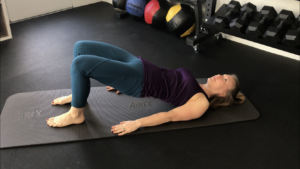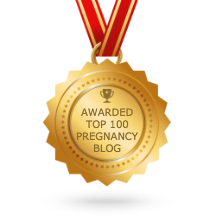By: Dr. Lindsey Paczkowski, PT (contact info, below)
 New to motherhood? The baby has arrived and you’re beginning to realize your body has accomplished some amazing things over the past year and you’re eager to get moving and exercising again. But you’ve got questions!
New to motherhood? The baby has arrived and you’re beginning to realize your body has accomplished some amazing things over the past year and you’re eager to get moving and exercising again. But you’ve got questions!
WHERE DO I START?
WHAT’S OKAY AND SAFE FOR ME TO DO?
IS THIS FEELING NORMAL? IT FEELS WEIRD! HELP!
As a pelvic floor physical therapist, I have the amazing opportunity to step alongside new and experienced mothers during and beyond their postpartum season to build movement confidence and safe return to exercise. Scroll down to see some specific exercises you can do.
What Does it Mean to Strengthen My Pelvic Floor?
In the realm of women’s health and postpartum we hear a lot about strengthening your pelvic floor and core. Most people know that the core is basically the torso. A strong core is so important because without a strong core, we are prone to injury, low back pain, among other things. A strong core gives us better balance, control of movement, and stability. A growing baby and uterus have a huge impact on our core but also on our pelvic floor. And NO ONE TALKS ABOUT THAT! They are all connected. So, let’s start with the basics.
What is the Pelvic Floor?
The pelvic floor is a group of skeletal muscles located in the pelvis. They can contract and relax just like your quadriceps and biceps muscles. This group of muscles can be trained for power, strength, endurance and coordination functions – just like other muscles! There are three layers of the pelvic floor! (No joke!) Many of the pelvic floor muscles are deep hip rotators too.
The 5 Fantastic Functions of the Pelvic Floor:
- STABILITY – Stabilize connecting joints and structures in and around the pelvis region.
- SUPPORTIVE – Support pelvic organs
- SEXUAL FUNCTION – Aid in sexual performance and pleasure
- SPHINCTERIC – Assist in urinary and fecal continence (aka helping us pee and poop when appropriate)
- SUMP PUMP – Act as a venous and lymphatic pump for the pelvis.
As we see the multifaceted functions of the pelvic floor, we can now appreciate how much the female body endures during labor. We also see we will need to have patience as we move to restore movement in the fourth trimester, the postpartum period.
What to Do in the Beginning Weeks Postpartum?
Gentle movement, diaphragmatic breathing and light walking is safe in the beginning weeks postpartum. As you progress toward the six week postpartum mark continue to listen to your body to slowly ease your body into recovery and strengthening after baby. Your care provider will most likely tell you at 6-8 weeks that it’s safe to start to exercise and to have sex. But it’s also important to listen to your body, even with the okay of your doctor, especially if you’ve had trouble breastfeeding, or a had a baby in the NICU, or any variations in the postpartum period. This is where it’s okay to give yourself – and your body – some GRACE!
What You SHOULD DO After Baby: Activate the core!
- Kegels
- Bridges
- Abdominal Bracing
- Diaphragmatic Breathing
Kegel: doing a kegel is contracting your pelvic floor muscles. Your pelvic floor muscles act like a hammock to support your internal organs (bladder, uterus and rectum). Think about stopping the stream of urine or lifting your pelvic floor muscles up and in. Try not to hold your breath or squeeze your butt muscles. Picture your kegel muscle lifting up into the pelvis as you contract.
Try to hold a kegel contraction as long as you can. It may only be three seconds. That’s totally okay! Hold your kegels for three seconds and perform 10-20 per day depending on what you are able to do.
**Sidenote: Make sure you do not practice stopping the stream of urine to perform a pelvic floor contraction. You want to make sure you sit on the toilet seat and relax the pelvic floor muscles and empty your bladder completely each time you urinate.
Bridging:
This is a great exercise for your glutes, hamstrings and core. Try performing a bridge with a kegel.
- Lie on the floor with your feet and knees hip-width apart, feet flat on the ground.
- Rest arms by your side, palms up
- Bend the elbows at 90 degrees, pointing fingers to the ceiling and push elbows into the floor. This allows you to squeeze your shoulder blades closer to each other and opens the shoulders and chest.
- Press feet into the mat and lift your pelvis, buttocks, and lower back up off the floor, lengthening your tailbone forward toward your knees.
- Let your hands rest on the floor, palms up
- Press your chest toward your chin while also gently lifting your chin up by pressing the back of your head gently in to the floor.
- When you are ready to release out of Bridge pose, lift your arms up over your head on the floor, palms up, lift your heels, and roll down one vertebra at a time.
- Option 1*: place a rolled up towel or a yoga block between your thighs and squeeze as you lift into Bridge Pose.
- Option 2**: Lift up into bridge pose and contract your kegel muscle and hold for 15-30 seconds.
Abdominal Bracing:
It is very important to learn how to activate your abdominals correctly. This is your core and will help keep you upright and stabilize your back to decrease low back pain and safely tolerate activities of motherhood and everyday life.
Give it a try:
- Standing or lying on your back, put your hands inside of your front hip bones, take a deep breath and make a “shhhhhhh” sound. You should immediately feel those muscles in your abdomen activate and pull in and away from your fingertips. You can also imagine you’re zipping up a pair of pants to facilitate the muscles to engage.
As a clinician I encourage you to reflect on your pregnancy and labor to guide your progressions moving forward. Factors to consider include: how your pregnancy went, duration of labor, duration of “pushing”, positioning during labor, c-section and other soft tissue and musculoskeletal damage such as perineal tearing and an episiotomy; all can make a difference on how to proceed and progress during the postpartum time.
Diaphragmatic Breathing:
- Place one hand on your chest and the other on your navel.
- As you breathe in allow the belly to rise up in to the hand on your navel.
- As you exhale, pull the belly toward the spine.
- Try to move the chest as little as possible concentrating on the diaphragm moving up and down to help pull the air into the lungs and push the air out of the lungs. This strengthens the core, and abdominal muscles.
Signs & Symptoms of Pelvic Floor Dysfunction
- Urinary and/or fecal incontinence
- Urinary and/or fecal urgency with difficulty to defer
- Pelvic pressure/heaviness
- Diastasis Recti or reduced abdominal muscle strength
- Low back/Hip/Pelvis Pain
- Constipation/ GI Dysfunction
If any of the items on this list sound like you, or a friend of yours, please consider seeking out a pelvic health physical therapist for an evaluation and treatment. Even if you don’t have symptoms, but want to prevent injury come see a pelvic health physical therapist to learn more about how your body can recover, heal and strengthen in your fourth trimester and rebuild your strength for life beyond!










